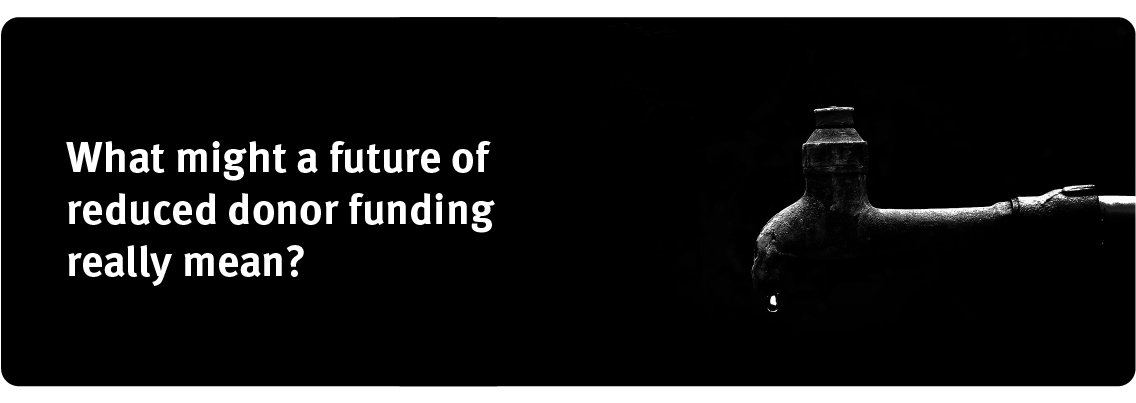
Prospects of stagnating donor funds
Donor expenditures on commodity procurement have declined in recent years and will likely continue to decline or, at best, remain stagnant in the coming decade. It is therefore crucial to understand the relative role of donor support across countries, and what will be required to ensure that remaining support is targeted wisely to address the needs of women in those countries that need it most.
Low-income countries will likely remain dependent on donor support
Results from the Contraceptive Commodity Gap Analysis 2019 (CGA2019) reveal that while donors represent only 5% of overall spending across the 135 low and middle income (LMIC) countries, nearly half of spending within low-income countries comes from donors. While declines in donor funding may appear relatively minor compared to overall global spending, they could have a serious impact on low-income countries. Prioritizing donor funding in lower-income countries will be critical.
Encouraging country governments to assume a larger role
CGA2019 findings also suggest that because of their larger revenue bases, governments in middle-income countries—both upper and lower—may be better positioned to compensate for declining levels of donor support.
CGA2019 — to be released on 31 July 2019
- Explores how levels and patterns of spending vary by country income level and discuss the implications of these differences for future financing needs.
- Projects the size of the funding gap that would arise if current spending on contraceptive supplies remains at current levels and shows that this gap is disproportionately distributed by both income level and sector.
